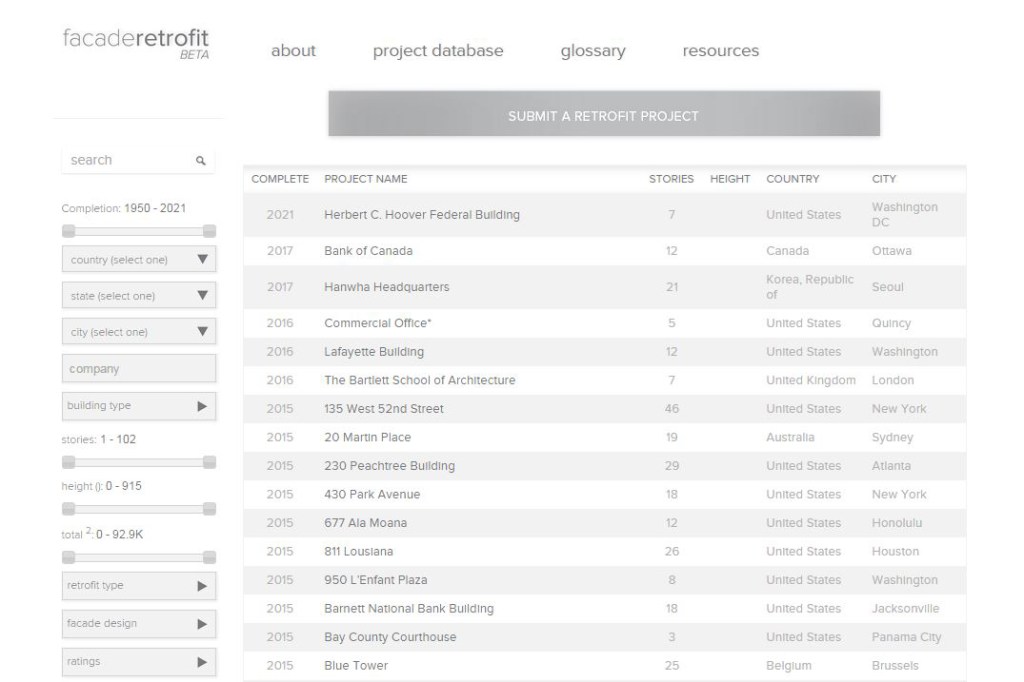Building green rarely means demolishing existing structures and creating anew—yet retrofitting comes with its own set of
concerns. Among them: What to do with the building’s façade, which can be
costly and cumbersome to renovate and, yet, is a key factor in managing energy performance. FacadeRetrofit.org is a new online database that aims to give AEC professionals a better idea of what works and what doesn’t when it comes to upgrading a façade in the name of energy efficiency. Currently beta mode, it was developed by the University of Southern California (USC’s) School of Architecture
and façade contractor Enclos’ Advanced Technology Studio, in New York and Los Angeles, and is
sponsored by the Council on Tall Buildings and Urban Habitat and the East China
Architectural Design and Research Institute.
The free database contains more than 500 commercial and multifamily buildings, to date, that have or are currently undergoing façade retrofits. By providing information such as the scope and scale of the project, the materials used, and reasons for retrofitting—a component or system failure, or aesthetic improvement, for example—the database can be used by project teams to inform their own retrofit work. It will also provide pre- and post-project benchmarking data on energy performance, building occupancy, and indoor environmental quality.
Firms can submit their own projects, which will be vetted by the database managers before being added. Researchers from USC’s School of Architecture will gather additional information to turn some of the database entries into case studies.
Tracking a building’s performance is gaining traction among project teams, building managers, and owners but it’s still far from the norm. Part of the holdup is the lack of reliable metrics with which to assess structures. This latest database joins a growing group of others like it that aim to fill that gap with benchmarking data. The U.S. Department of Energy (DOE’s) Buildings database, for example, offers information to improve building-performance metrics. The Lawrence Berkeley National Laboratory, with the DOE, maintains the Building Performance Database, which allows users to compare performance across building types and geographic regions. And last year the National Renewable Energy Laboratory debuted a Web-based tool for sourcing energy-performance data on building products and systems.
